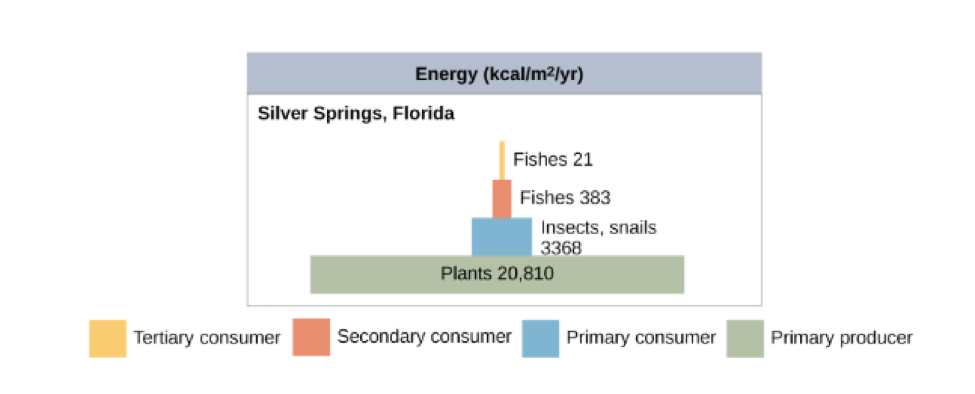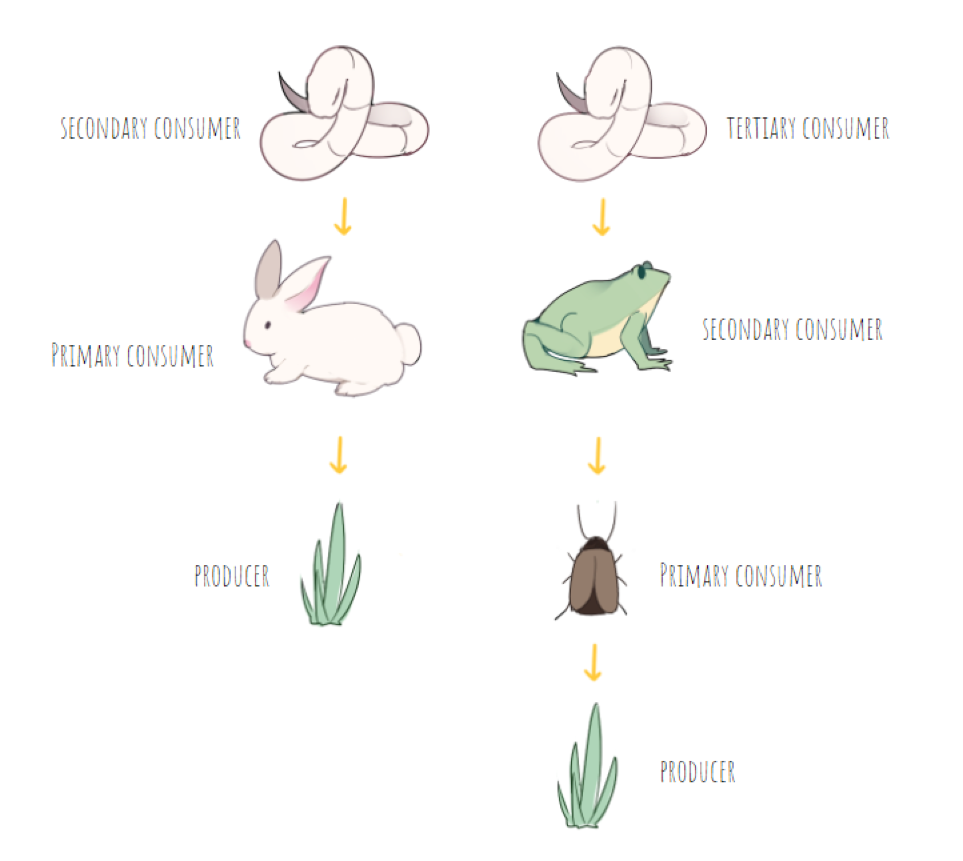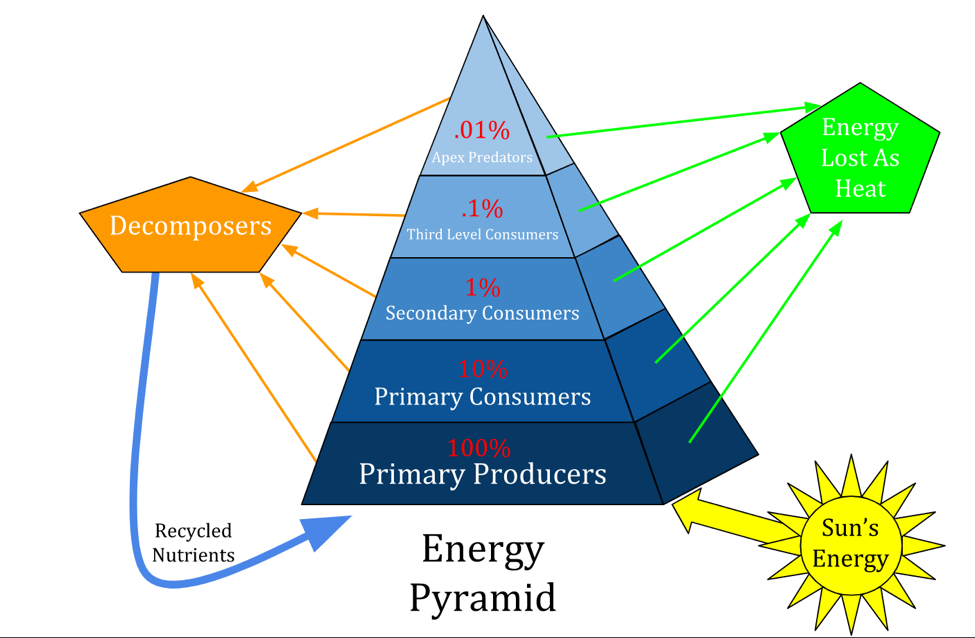Energy pyramids
Learning Objectives
Identify and describe the levels of the pyramid: producers, primary consumers, secondary consumers, tertiary consumers.
Understand the role of decomposers.
Know that about 10% of the energy from each level reaches the one above.
Energy pyramids describe the way energy flows in an ecosystem. Like any other pyramid, they go from a large base to a smaller top. This representation shows that the amount of energy retained decreases as it goes through a system.

Overall, the model shows the amount of energy at each trophic level, with the word trophic referring to different feeding levels of an ecosystem. About ten percent of energy from each level reaches the level above it. At the bottom of the pyramid, you have producers. These are usually plants or other photosynthetic organisms, such as algae or photosynthetic bacteria. Producers are autotrophs, meaning they are self-feeding organisms that do so by making their own organic molecules. Photoautotrophs like plants use energy from light to form sugars from carbon dioxide. Energy is stored in the chemical bonds of these molecules, which are used as fuel and building materials.
Above producers on the pyramid are consumers. The organisms on the level just above producers are referred to as primary consumers, as they consume producers. These organisms are generally herbivores, such as rabbits.
The organisms that consume primary consumers are secondary consumers. These organisms feed on primary consumers, and include carnivores such as snakes. As you might guess, tertiary consumers consume secondary consumers. This might include an organism like the fox.

It’s important to keep in mind that an organism’s role may change based on the context. For example, if a snake eats a rabbit that ate plants, it would be considered a secondary consumer. However, if the same snake eats a frog that ate an insect that ate plants, the snake would be considered a tertiary consumer.

Decomposers are also essential in an ecosystem. These organisms break down dead organisms and other waste, such as feces. The breakdown of waste can be used to provide nutrients that are usable by producers. From this, you can see how energy is kind of cycled through a system.
As we mentioned before, around 10% of energy is conserved through each trophic level. Meaning energy conserved at the primary consumer level compared to producers is 10%, and energy conserved at the secondary consumer level compared to producers is 1%.
In a real world application, these pyramids show why high meat diets have such a large carbon footprint. For example, cows would be considered as primary consumers. Since they contain only 10% of the energy originally from the plants they consumed, it takes 10 times more plant mass to support a meat-eater than someone on a plant-based diet.

